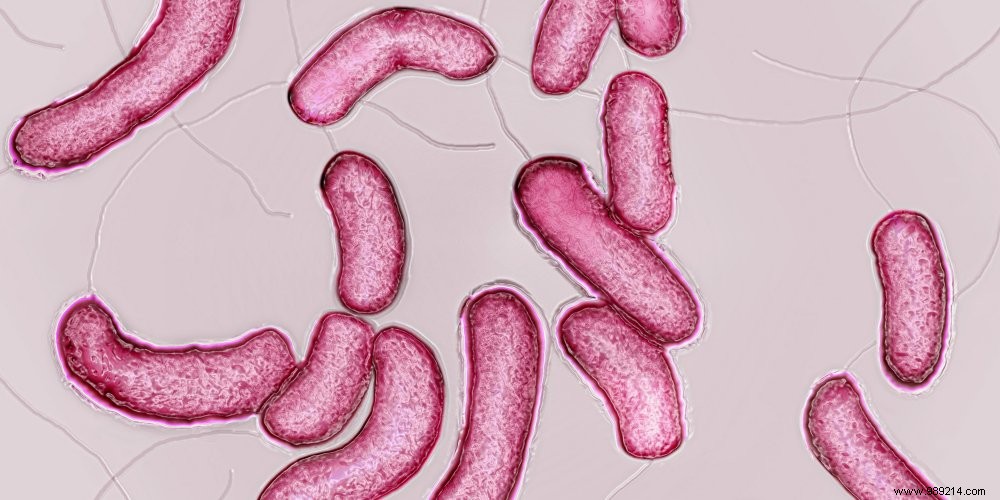 Infectiologists are sounding the alarm at the increase in the number of bacteria that have become resistant to treatment. This worrying phenomenon constitutes "one of the main threats to the health of humanity", according to the World Health Organization (WHO).
Infectiologists are sounding the alarm at the increase in the number of bacteria that have become resistant to treatment. This worrying phenomenon constitutes "one of the main threats to the health of humanity", according to the World Health Organization (WHO). Since the discovery of penicillin in 1928 by Scotsman Alexander Fleming, the advent of antibiotics has saved millions of lives by muzzling the aggressive bacteria responsible for infections. However, this extraordinary advance in modern medicine seems to have run out of steam. Because of their great effectiveness, antibiotics have indeed seen their use multiply… to the point of mismanagement. Result:many germs have adapted and developed resistance.
If we fail to tame them, we risk going back a century, to a time when a simple injury could degenerate into a deadly infection. The post-operative follow-up after a prosthesis or an organ transplant could also become problematic.
The situation begins to become critical. The number of deaths, linked directly or indirectly to an infection by resistant bacteria, is estimated at 700,000 per year worldwide. And according to a November 2018 study published in the prestigious medical research journal The Lancet , 33,000 people died of it in 2015 in the European Union, including 5,500 in France. If nothing changes, mortality from infectious disease will exceed that from cancer. "A person will die of infection every three seconds in 2050 in the world", warns the WHO.
Video of the day:The bacteria that are beginning to cause the most concern are enterobacteriaceae (especially Escherichia coli and Klebsiella pneumonae), because their resistance to 3 th cephalosporins generation continues to increase:2% in 2007 against 10.2% in 2017 for the first and 10% in 2007 and 28.8% in 2017 for the second. The bacilli responsible for tuberculosis are also of growing concern with 600,000 cases resistant to rifampicin, the first-line reference anti-tuberculosis drug, reported in 2017.
By dint of using antibiotics in an unreasonable way, we ourselves have signed their death warrant. While these drugs are only effective against bacteria, many are still misprescribed to patients with viral illnesses (colds or flu, for example). Faced with this aggression, the bacteria of our intestinal flora – the famous microbiota – then develop resistance that they are likely to transmit to pathogenic bacteria.
In France, the consumption of antibiotics remains too high. In community medicine, it is twice as high as in Germany and three times as high as in the Netherlands, according to a report by the Court of Auditors in February 2019. We are certainly bad students, but it is still worse in certain countries of Asia, Africa or South America where antibiotics are sold over the counter, without medical supervision. Sometimes you can even find them in the markets. Low doses, they are not very effective but strongly stimulate the appearance of resistance. And with the movement of populations, these "super-microbes" are spreading throughout the world.
Half of the antibiotics marketed in the world are intended for poultry and livestock. Some are dispensed for veterinary purposes, for therapeutic or preventive purposes. But most of it is delivered to boost animal growth and weight gain. It is indeed proven that oxen, pigs, turkeys and chickens grow faster by ingesting low doses of antibiotics.
This practice is now banned in Europe, but it persists in many countries – including the United States – which greatly favors the appearance of resistant bacteria which spread in the environment and are then transmitted to humans.
Nosocomial infections, contracted following treatment or a stay in hospital, are legion:one person in twenty is a victim in France, according to the Court of Auditors. However, in a hospital environment, many germs in circulation are resistant to one or more antibiotics due to the concentration of patients. It is enough for the nursing staff to forget to wash their hands with hydro-alcoholic gel between two patients for the bacteria to pass from one to the other. In November 2018, a study published in The Lancet suggested that 75% of infections with multidrug-resistant bacteria were indeed acquired in hospital.

Excessive hygiene is also to blame. Austrian researchers from the University of Graz demonstrated in March 2019 that the departments most subject to strict microbial control (intensive care unit in particular) harbor more ultra-resistant germs.
Medical tourism is even more risky because it takes place in countries where recalcitrant germs are the most numerous. Going for a hip prosthesis in India or having your breasts redone in the Maghreb is certainly less expensive but greatly increases the risk of contracting multi-resistant strains.
To stop the spread of stubborn germs, antibiotics should only be used when absolutely necessary. It is also better to respect the dosage and duration of intake indicated on the prescription. Stopping treatment too soon, on the pretext that your symptoms have disappeared, is conducive to the development of resistant bacteria.
Faced with angina, your doctor should also systematically perform a rapid diagnostic test to determine whether its origin is viral or bacterial. In the first case, antibiotics are completely useless. But alas, only 40% of treating physicians carry out this test. Pharmacists now have the right to practice it too. But it is clear that few pharmacies offer it.
For decades, the major laboratories have stopped investing in the search for new antibiotics. They prefer to bet on the development of drugs against diabetes or cancer that are much more profitable. But all hope is not lost. Several start-ups are trying to understand the biological mechanisms behind antibiotic resistance in order to circumvent them. Others isolate molecules from fungi or bacteria that can restore the effectiveness of antibiotics.
Many doctors pin great hopes on bacteriophages, specific viruses that attack bacteria. Administering them to patients infected with multi-drug resistant strains should make antibiotics unnecessary. This is the principle of phage therapy. Known for a long time, it fell into oblivion with the arrival of antibiotics, except in Eastern Europe. Several laboratories are trying to bring it up to date, but for the time being it is only reserved in France for the most serious cases for which there is no longer any other alternative. But given the good results obtained, particularly at the Croix-Rousse hospital in Lyon against bone and joint infections, this treatment could be generalized in a few years.